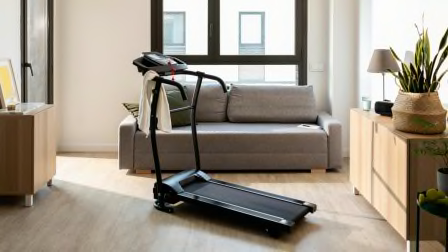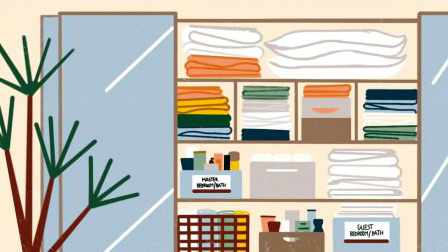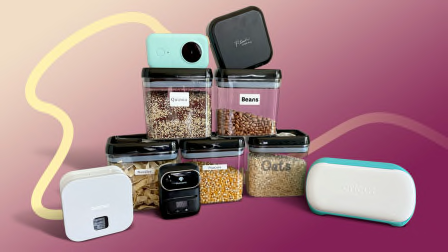Best Vacuum Storage Bags
I stuffed several bags with blankets, clothing, tablecloths, and more, and while the bags may look alike, not all of them were up to the task
When you shop through retailer links on our site, we may earn affiliate commissions. 100% of the fees we collect are used to support our nonprofit mission. Learn more.
Every year, I go through the same dilemma. As the seasons change from winter to spring, I scramble to find space in my closet to accommodate the blankets and comforters that I no longer need. The bulky bedding, once crucial to my comfort during the doldrums of December and January, is now a challenge when I’m trying to store it away.
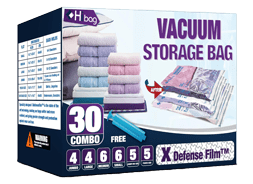
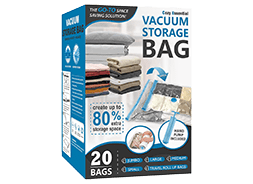
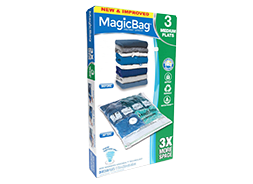
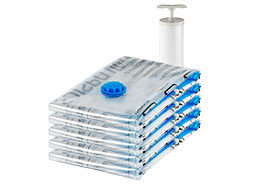
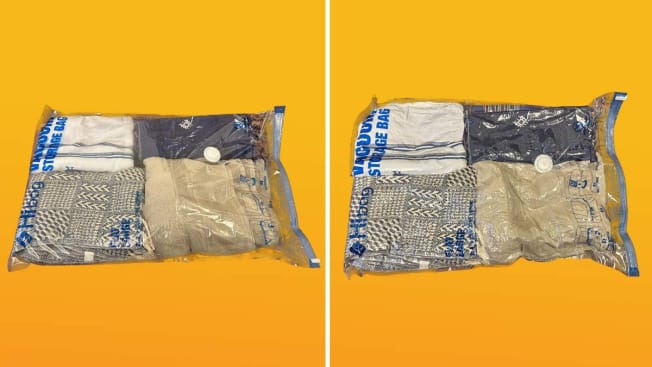
The Hibag Vacuum Storage Bag sells different sets, and the one I tried was the combo series, which consists of 30 bags in varying sizes: jumbo, large, medium, small, carry-on, and pouch. It costs around $30, which is pretty inexpensive considering the amount of bags you’re getting.
I tried the large bag and could stuff in four tablecloths and a large, fluffy bath towel. I also tried the pouch-sized bag, the smallest bag of the set, and was able to fit in five T-shirts.
It didn’t take much effort to seal the bags and compress them. You can roll out the air in pouch-sized and carry-on-sized bags by hand. For the rest of the bags, you can use a vacuum or the hand pump that comes with the bags to suction out the air.
With the large bag, I used the hand pump. The process didn’t require too much physical strength, and it took me around 1½ minutes to draw out the bag’s air, a process shorter than the bags from other brands I evaluated that were of comparable size. With the pouch-sized bag, I rolled out the air by hand. Both bags shrunk around 1 inch in height after the air was sucked out or squeezed out of them.
The bags are pretty durable. When I poured water over them, no water leaked in. And when I left them out for a day, there were no changes in size that would indicate air leaking in.
For me, the Hibag stands out the most for its additional features. I appreciate that each bag has its size printed on it, which makes it easier to keep track, especially given the number of bags in a set. I also liked how instructions were printed clearly on the hand-rolled bags on how to remove the air from them. For every bag in this set, there’s a design that advises you not to fill the bag beyond a certain line in case you overfill it.
Overall, the Hibag emerged as a winner for me because of how easy it was to use and the detailed information that came with the bags. It also gained points in my book for having bags that don’t require you to use a hand pump or vacuum cleaner, making them well-suited for travel purposes.
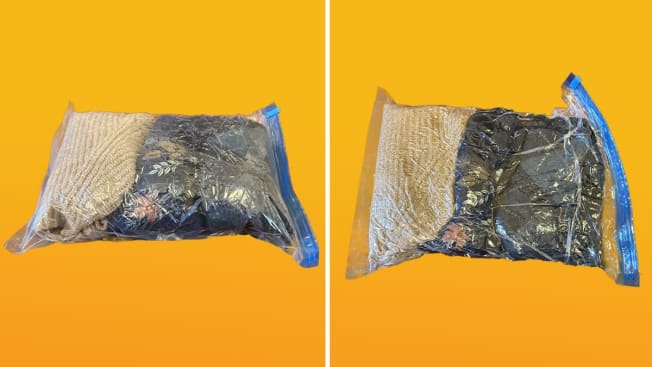
The Cozy Essential Vacuum Storage Bag comes in various combo packs. The one I evaluated has 20 bags and is in these sizes: jumbo, large, medium, small, and travel roll-up. You draw out the air in the travel roll-up bags by hand-rolling them. For the rest of the bags, you suction the air out of them through a vacuum cleaner or hand pump.
I tried out this set’s large bag and travel roll-up bag. I was able to squeeze in a puffer coat, two sweaters, and four pants into the large bag, and for the travel roll-up bag, I fit in three pants.
Sealing it took slightly more effort than the Hibag Vacuum Storage Bag. With the large bag, I had to pinch the zipper hard to make sure the bag was fully sealed and wouldn’t leak air.
To remove the air from the large bag, I used the hand pump. It didn’t take a lot of effort, but the process was slightly longer than for the Hibag Vacuum Storage Bag. The large Hibag bag took me 1½ minutes to fully deflate, while the large Cozy Essential bag took me almost 2 minutes. For the travel roll-up bag, I rolled out the air by hand. After I had compressed the air out of them, both bags decreased by around 1 inch in height.
Neither of the two bags showed signs of air leaking after being left out for a day, and when I poured water over the bags, there was no seepage of water inside.
Design-wise, I wish it had a line printed on the bag that advises you to fill the bag only within this line. Several of the other vacuum storage bags, including our editor’s pick, the Hibag Vacuum Storage Bag, have this design to prevent you from overfilling your bags.
But aside from that, I enjoyed how inexpensive the bags were and how fairly easy they were to pump or compress. Like the Hibag set, this set has bags that are smaller in size and suited for travel because you can roll the air out of them by hand instead of having to use a hand pump or a vacuum cleaner.
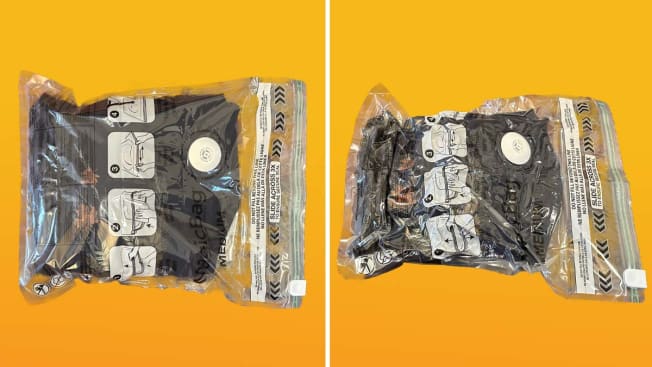
For the MagicBag Instant Space Saver Storage, I tried out the flat, medium 3-pack. For people looking for other sizes, the MagicBag also comes in sizes such as travel, large, extra large, and jumbo.
I squeezed two heavy winter sweaters into the medium-sized bag. After compression, the bag decreased around an inch in height, similar to the other bags I tried.
This one required more physical effort to seal. I had to pinch the zipper hard and slide it back and forth a few times to ensure the bag was airtight. That being said, I enjoyed how the seal was designed on the bag. One side is blue, and the other side is yellow, and when the seal is secure, it shows up as green.
What impressed me the most about this set was the valve. There’s no cap you have to open, and you can apply your vacuum hose directly onto the valve without having to open or remove anything.
When I evaluated this bag for its waterproofness, I poured water directly over the valve, but no water seeped through into the bag. The bag was pretty durable and didn’t re-inflate after being left out for a day.
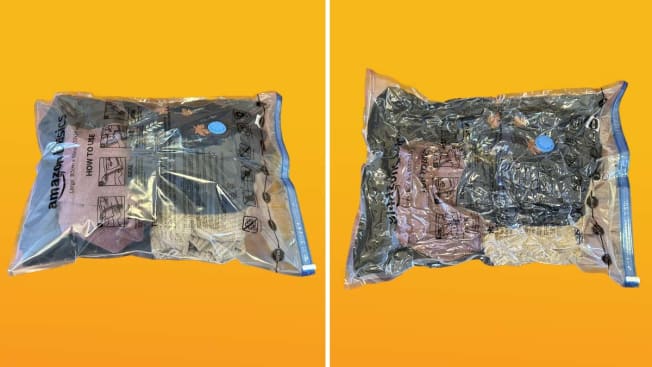
The Amazon Basics Vacuum Compression Zipper Storage Bags with Hand Pump I tried was a pack of five large bags, though the product also comes in other sizes. In my evaluation, I could fit in one puffy winter jacket, three sweaters, and one pair of sweatpants inside one of the bags.
The zipper of this set felt cheaper and flimsier than some of the other products, and it slid off the bag when I was trying to seal it. That being said, after I had reattached the zipper, I managed to seal the bag without further incident, and the seal remained secure.
With a pump, it took me around 2½ minutes to draw out the air, longer than the time it took for me to suck out the air of the large bag from either the Hibag or Cozy Essential sets. The longer process made pumping slightly more tiring. That being said, the bag lost around 1½ inches in height after the compression, which is more than most of the bags. Later, when I opened the bag, I found the difference between the deflated bag and the re-inflated bag to be the starkest among all the products.
Design-wise, I liked how instructions for usage were clearly printed on the bags and that there was a line on each bag that warned not to overfill it past the mark. When I poured water over the bag, there were no signs of leakage, and the bag remained the same size after a day.
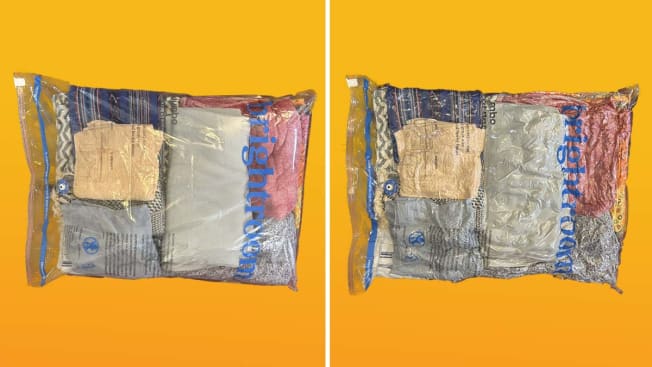
The Brightroom Reusable Storage Compression Bags come in different sizes, but the one I tried was jumbo-sized. It came with two bags and cost around $15, making its price per unit pretty high.
I fit five blankets, four tablecloths, and two towels in one of the bags. For the other one, I slid in the bulkiest winter blanket in my home. One of the best features of Brightroom bags is that they can be compressed in two ways: vacuuming or pressing. I tried both methods. Because the bags didn’t come with a hand pump, I used my vacuum cleaner on one of the bags and rolled out the air with the other.
If you want more air compressed out of the bags, vacuuming the bags is still the way to go. The bag I vacuumed lost around 1½ inches in height after the compression, whereas the bag I had hand-pressed lost only 1 inch. The latter was also more bunched up in parts where I had rolled it, making it slightly unwieldy in shape.
Both of the bags remained deflated in size after I checked on them a day later, and neither had water seep through even after I had doused them with water.
I enjoy some design features of the Brightroom Reusable Storage Compression Bags, such as the clear signs that warn you not to fill up the bags past the lines. I also like the seal’s design, which is red on one side and yellow on the other. When you’ve properly sealed the bag, the whole seal will turn orange.
But there are some design elements that I didn’t like. The zipper detached from the bag the first time I tried sealing it, and I had to be careful not to have it run off again.
The valves on the bags are slightly less easy to use than the valves on other vacuum storage bags I evaluated. Most of the other valves I tried come with a cap that you screw open when you want to draw out the air in the bags and then screw back on once you’re done. With the Brightroom Reusable Storage Compression Bags valve, you have to lift up the valve and turn it counterclockwise to open it while filling the bags and compressing them. To close the valve, you push it down and turn it clockwise. It’s not hard to use, per se, but it’s not always immediately apparent to me whether the valve is in an open or closed position, which makes the process less straightforward than with the other bags.
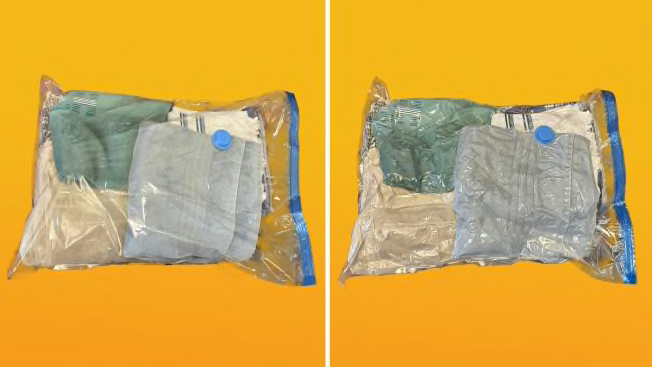
The Spacesaver Vacuum Storage Bags that I tried was the large 6-pack. In the bag, I was able to fit two puffer jackets and two sweaters.
Sealing the bag wasn’t super-difficult, but I found that the zipper could slip off the bag if you’re not careful. The bag shrank around 1 inch in height after I had sucked out its air. Using the hand pump took me around 2½ minutes, similar to the time it took with the Amazon Basics Vacuum Compression Zipper Storage Bags with Hand Pump. Because of the time it took to suction out the air, it felt like a slightly more laborious process than the bags that took a shorter amount of time. When I touched the bag, I felt that there was still some air in the bag and that the clothes didn’t feel as compressed as in some of the other bags.
The plastic of the bag also seems thinner. Its durability, however, is on a par with the other bags I’ve evaluated. It didn’t leak any water when I poured water over the bag, and its size didn’t change after being left out for one day.
In terms of design, the Spacesaver Vacuum Storage Bags don’t have a line on the bags that prevents you from overfilling them.
Tips for Using Vacuum Storage Bags
If you’re using a vacuum storage bag, one of the most important things to keep in mind is to not overfill it because you risk tearing your bag, which will affect its ability to be airtight, says professional organizer Sylvie Khan.
You can also try to compress the items you’re storing before you place them inside the bags. If you’re storing something compressible like a down coat, try squishing out the extra air first, Khan says.
And while it may be tempting to squeeze everything you want to store away into vacuum storage bags, you should exercise discretion. The bags are better for seasonal storage and down-filled items, such as coats, duvets, and vests, which have the best chance of springing back into shape, Khan says.
Accessibility is also something to consider. You don’t want to store something in the bags you need to access frequently. “In the past, I’ve found that the more you open and close the bags, the less seal they have,” says Sara Losonci, founder of Shelfie, a company that offers decluttering and organizing services.
If you must, store linens in the bags, and not clothing. You can probably make the exception for ski clothes, which you need to pull out only a few times a year, says Emily Ranager, the director of operations of Shelfie.
Before you store anything in vacuum storage bags, it’s good to recognize their limits. They’re not the most ideal option for permanent storage because they can be hard on your clothes and bedding, and cause them to be wrinkled. Also, over time, the plastic bag might break down, Khan says.
They’re also not the easiest to access if you need to retrieve something from the bags, and they don’t stack up nicely, Losonci says.
The best thing about vacuum storage bags is that they take up minimal space, but if you’re looking for alternatives, a hard plastic tub will last a lot longer than a vacuum storage bag and is easier to recycle, Khan says.
How We Evaluated Vacuum Storage Bags
I tried out different vacuum storage bags in my home for a few weeks and evaluated them based on the following criteria.
Performance
I stuffed the bags with items commonly stored in vacuum storage bags, such as bedding, linens, and winter clothing. I then judged how much space was saved by measuring the height of the thickest parts of the bags before and after I had removed air from them.
Ease of Use
I assessed how easy the bags were to use, how long it took to remove air from them, and how easy they were to seal.
Durability
I poured water over the bags to see whether they were waterproof. I also kept them out for a day or two to see whether any air had leaked.
Design
I looked at additional design features to see whether they made the process of storage and organization easier. Examples include clear instructions printed on the bags and lines that prevent users from overfilling their bags.
@consumerreports Vacuum storage bags may all look alike, but they don't all perform the same. See our full evaluation of six different brands through the link in our bio. #vacuumbag #storagetips #homeorganization
♬ original sound - Consumer Reports

















